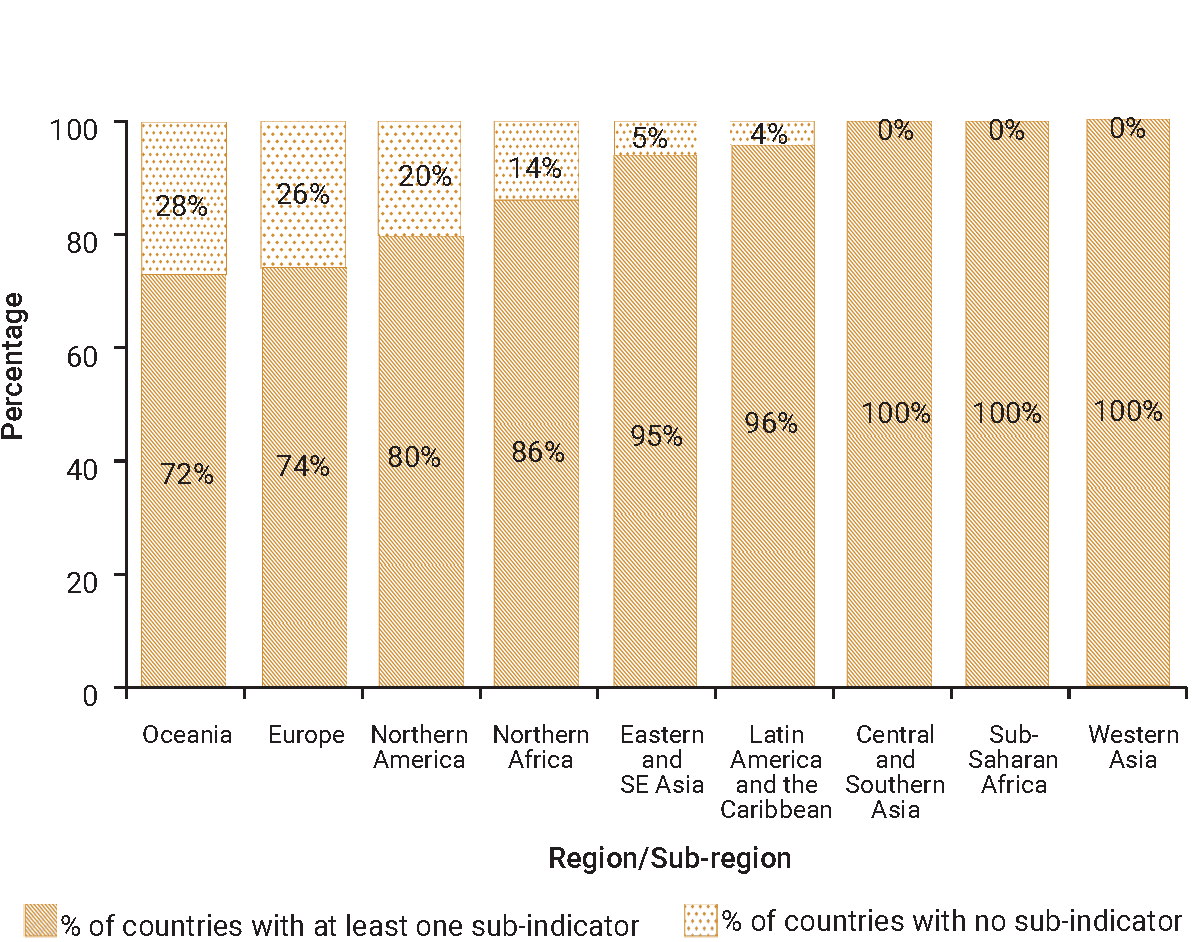SDG Indicator 7.b.1: Installed renewable energy-generating capacity in developing and developed countries (in watts per capita)
1. Key features and metadata
Definition:This indicator measures the installed capacity of power plants that generate electricity from renewable energy sources, divided by the total population of developing and developed countries.
| Sub-indicator | Disaggregated by |
|---|---|
|
EG_EGY_RNEW Installed renewable electricity-generating capacity (watts per capita) |
Type of renewable technology (bioenergy, geothermal, hydropower, marine, solar, or wind). |
Sources of information: National Statistical Offices and National Energy Agencies or Ministries in response to the International Renewable Energy Agency (IRENA) annual questionnaire cycle. Data for preliminary estimates may also be collected from industry associations, national utility companies or grid operators.
Related SDG Indicators: 12.a.1 (duplicates), 7.1.2 (Proportion of population with primary reliance on clean fuels and technology), 7.2.1 (Renewable energy share in the total final energy consumption) and 7.a.1 (International financial flows to developing countries in support of clean energy research and development and renewable energy production).
2. Data availability by region, SDG Global Database, as of 02 July 2025

3. Proposed disaggregation, links to policymaking and its impact
| Proposed disaggregation | Link to policymaking | Impact |
|---|---|---|
| Installed renewable energy-generating capacity in developing and developed countries per relevant sub-national level (watts per capita) |
The aim of this disaggregation is to underscore the potential disparities of access to those sources of energy at sub-national level. It provides valuable information for national and local authorities in identifying the specific requirements. For instance, institutional needs (building up an enabling environment), technological needs, and financial needs (public and private sources). It also highlights economic problems associated with the deployment of renewable energy in sub-national settings and supports the formulation of tailored, cost-effective and informed strategies to support a just, clean and sustainable energy transition as well as climate change policies (IEA et al. 2023; UN-DESA 2023a). This disaggregation is in line with the Paris agreement on Climate Change. |
By closing the gap between countries’ sub-national territories, especially between urban and rural areas, governments could avoid increasing inequalities, social tensions and the worsening of poverty. In addition, connectivity can increase access to and the generation of renewable energy, accelerate its integration, optimize the production and use of energy, and contribute to gender equality. This is of particular importance for Least Developed Countries (LDCs), Small Island Developing States (SIDS) and Landlocked Developing Countries (LLDCs). |
| Installed renewable energy-generating on-grid/off-grid capacity in developing and developed countries and by type of renewable technology (watts per capita) | This disaggregation provides access to information about the on-grid/off-grid capacity of solar energy production. This disaggregation is notably helpful for identifying and addressing technical (i.e. transmission infrastructure), political (i.e. strong commitments), regulatory (i.e. strategies or plans), institutional, financial (i.e. stakeholders, public-private partnerships or energy prices) and cultural barriers to connectivity development (UN Energy 2023; UN-DESA 2023a). It also encourages the development and adoption of evidence-based policies. |

